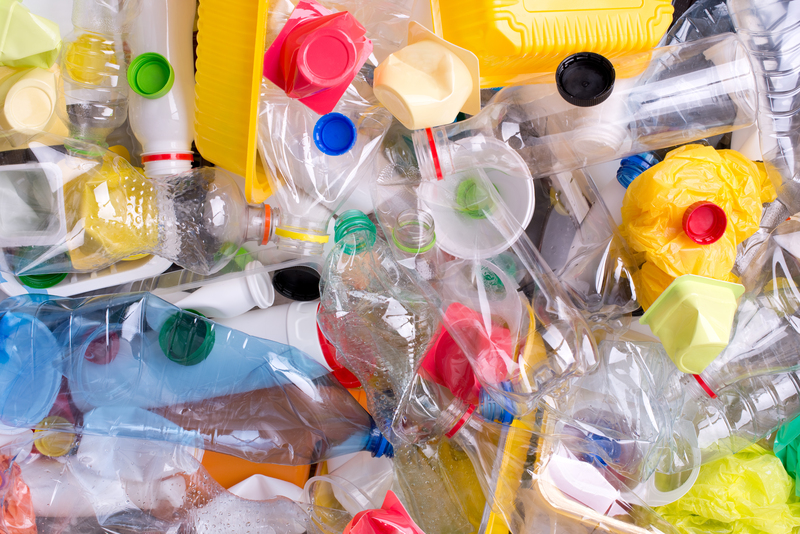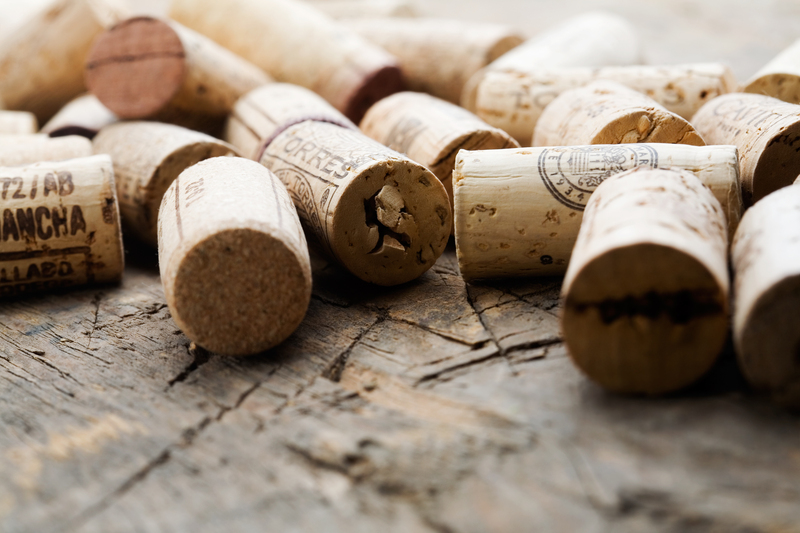Give Your Old Pots and Pans a Second Chance Through Recycling
Have you ever wondered what to do with those worn-out pots, scratched-up pans, and defunct cookware gathering dust in your pantry? Giving your old pots and pans a second chance through recycling is a sustainable, responsible, and creative way to prevent waste from ending up in the landfill. Whether you're interested in reducing your environmental footprint, decluttering your kitchen, or supporting the circular economy, recycling cookware is a surprisingly impactful step. In this comprehensive article, we'll explore process, benefits, options for recycling old cookware, plus creative repurposing ideas for a truly eco-friendly kitchen overhaul.
Why Recycle Old Pots and Pans?
Each year, millions of tonnes of metal items, including old pots and pans, end up in landfills. Many people don't realize that cookware is mostly made from recyclable materials like aluminum, stainless steel, copper, cast iron, and sometimes non-stick surfaces. Recycling cookware not only conserves precious resources, but helps reduce greenhouse gas emissions and landfill usage.
The Environmental Impact of Discarded Cookware
- Resource Conservation: Recycling metals from cookware reduces the need for mining, conserving energy and raw materials.
- Waste Reduction: Diverts bulky items from landfill and prevents soil and water contamination from degrading metal and chemical coatings.
- Lower Emissions: Melting down scrap metal requires less energy than producing new metal from ore.
Giving your old cookware new life by recycling or repurposing plays a crucial role in achieving sustainability at home.

What Types of Pots and Pans Can Be Recycled?
Most cookware has recyclable potential, though the process may vary by material and coating. Here's a rundown of recyclable pots and pans:
- Aluminum Cookware: Highly recyclable, often accepted at scrap metal and curbside facilities if coatings are removed.
- Stainless Steel Pots and Pans: Also widely accepted by metal recycling centers.
- Copper and Brass: Precious metals like copper are prized by scrap yards.
- Cast Iron: Durable and fully recyclable, though heavy.
Non-stick and ceramic-coated pans require special handling, as their coatings may not be recyclable. Check with your local waste management office for guidelines.
How to Prepare Your Old Cookware for Recycling
- Remove plastic, rubber, or wooden handles (unless the recycler accepts them).
- Make sure cookware is empty and clean--no leftover food!
- Sort cookware by metal type if required by the recycling center.
- Check for manufacturer take-back programs or community recycling drives.
Where to Recycle Old Pots and Pans
Recycling options vary based on your location and local services. Here's how you can responsibly dispose of or recycle your unwanted cookware:
1. Curbside Metal Recycling Programs
Many municipalities offer curbside recycling for ferrous and non-ferrous metals. However, since pots and pans can be bulky or have mixed materials (metal bodies with plastic handles), always check your city's recycling guidelines before leaving cookware curbside. Aluminum and stainless steel pans without non-stick coatings are usually accepted.
2. Local Scrap Metal Yards
Scrap metal yards often accept a wide range of cookware, including stainless steel, copper, and cast iron items. Call ahead to ensure they accept cookware and ask if the metal needs to be separated by type. Scrap yards may even pay you for valuable metals, giving your recycling efforts an extra incentive!
3. Household Hazardous Waste Facilities
Some non-recyclable pans--especially those with Teflon or other non-stick coatings--should not go into regular metal recycling. These may be accepted at designated drop-off centers for household hazardous waste. These facilities properly process and dispose of materials that can leach chemicals into the environment.
4. Manufacturer Take-Back Programs
Certain cookware brands offer take-back or recycling programs. Leading brands like Tefal, Calphalon, and GreenPan partner with recycling organizations or provide instructions for sending used cookware back. Check your manufacturer's website for eco-friendly options.
5. Community Swap Events and Donation Centers
If your pots and pans are still functional--but no longer wanted--consider donating to charities, community kitchens, or posting on local giving groups. Repurposing items before recycling reduces waste and helps those in need.
Creative Ways to Repurpose Old Pots and Pans
Not all cookware must go to the recycler right away. Repurposing old pots and pans can transform them into practical, decorative, or even whimsical items around your home or garden:
- Planters: Fill old saucepans or frying pans with soil to create quirky herb or flower pots. Drill drainage holes first.
- Storage Containers: Use cleaned, polished pots to organize small garage items, office supplies, or craft materials.
- Bird Feeders and Baths: Hang or mount sturdy cookware for creative outdoor bird stations.
- Wall Art and Clocks: Paint or embellish old pans and convert them into unique wall clocks or kitchen art.
- Candle Holders: Smaller pans can serve as rustic candle trays for centerpieces.
- Garden Tool Holders: Attach handles to shed walls for hanging tools or gloves.
Repurposing offers a way to keep treasured but outdated pots and pans in your life--while reducing waste.
The Circular Economy and Sustainable Kitchen Habits
When you recycle or upcycle your old pots and pans, you're supporting the circular economy. This model emphasizes keeping products, components, and materials in use for as long as possible, extracting maximum value and minimizing waste.
- Reduces extraction of raw materials
- Extends product life and functionality
- Prevents pollution and reduces carbon emissions
- Promotes innovation in recycling and design
Tips for a Zero-Waste Kitchen
- Choose Durable Cookware: Invest in high-quality, long-lasting pots and pans to reduce future waste.
- Repair Before Replacing: Replace handles, re-season cast iron, or refinish surfaces?
- Re-use and Repurpose: Get creative with your old cookware instead of sending it to the landfill.
- Recycle Responsibly: Always check local guidelines to recycle the right way.
- Buy Recycled-Content Products: Support manufacturers who use recycled metals to encourage sustainable production.
Frequently Asked Questions About Recycling Pots and Pans
Can I recycle pots and pans with non-stick coatings?
Most non-stick coatings like Teflon cannot be processed with regular metal recycling. These items may need to go to a hazardous waste facility, though some advanced recycling programs separate the coating from the metal. Check with your local recycler for best practices.
What about cookware with plastic or wooden handles?
Remove plastic, rubber, or wood handles if possible. Some metal recyclers will accept pots and pans with attached handles, but others require only pure metal.
Why do scrap yards pay for recycled cookware?
Scrap yards value metals like copper, brass, and aluminum because they can be melted down and reused in new manufacturing, saving energy over producing metal from raw ore. Clean, separated metals fetch the best price.
Can glass lids be recycled?
Most cookware glass lids aren't made from standard bottle/jar glass and are not typically accepted in curbside glass recycling programs. Instead, see if a local waste facility or reuse center will accept them.
Recycling Pots and Pans: A Step-By-Step Guide
- Assess your cookware and determine material types: Aluminum, steel, copper, cast iron, etc. Check for coatings and mixed materials.
- Clean and prepare: Remove all food residues and detachable parts like handles.
- Decide whether to recycle or repurpose: If the item is still functional, consider donating or repurposing.
- Locate a local recycling facility or drop-off center: Search online, call your municipal waste office, or use recycling databases like Earth911.
- Follow facility instructions: Specific recycling centers may require sorting, approvals, or limits on quantity.
- Transport and recycle your cookware--and pat yourself on the back for preventing waste!
The Benefits of Recycling Old Pots and Pans
- Environmental Protection: Reduces landfill space and prevents leaching of chemicals.
- Energy Savings: Uses less energy to recycle and remanufacture than to mine and process virgin metals.
- Supports Local Economy: Scrap yards and recycling centers create jobs in your community.
- Clears Kitchen Clutter: A tidier space makes cooking and cleaning easier and more enjoyable.
- Promotes Creativity: Repurposing old cookware is a fun, eco-friendly DIY challenge.

Conclusion: Give Your Old Culinary Gear a Sustainable New Life
Recycling your old pots and pans is a simple yet significant action you can take for environmental health and household tidiness. By finding the right recycling channel or discovering new uses for your cookware, you ensure that valuable metals are put back into use, giving your kitchen tools a generous second chance at life.
Let's make it a habit to recycle and repurpose, ushering in a greener, more sustainable kitchen for today and tomorrow. Your old pots, pans, and kitchen gadgets don't belong in the landfill--give them a new story through recycling!
Resources
- Earth911 Recycling Locator
- EPA How to Recycle
- Recyclebank
- Contact your local waste management office for regional cookware recycling guidelines.
